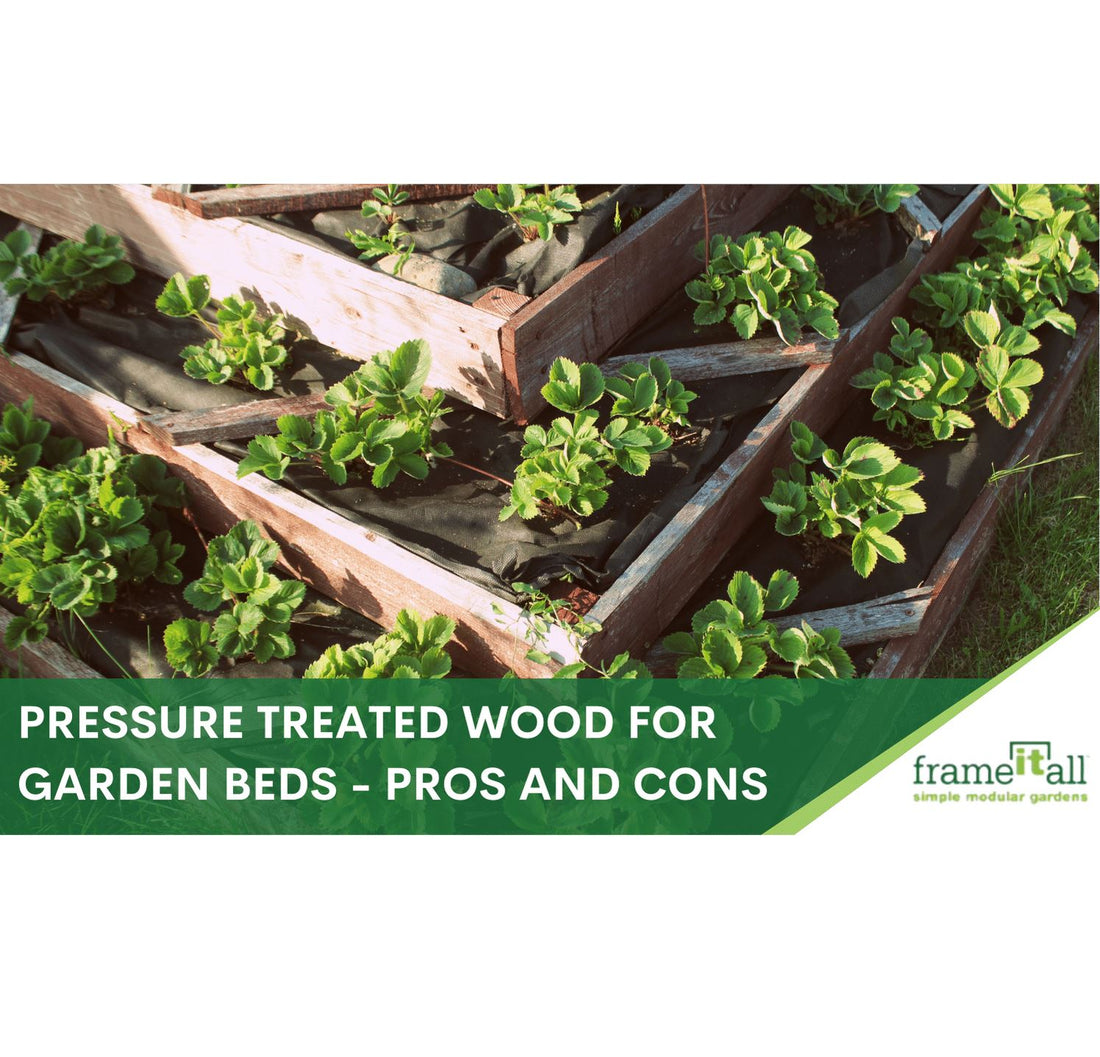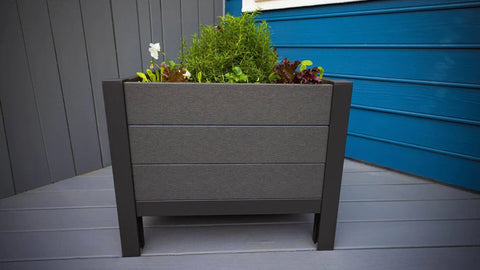Are you considering pressure-treated wood for your raised garden beds? The choice of materials in gardening is crucial, and pressure-treated wood is a popular option due to its enhanced durability and resistance to rot. However, its safety and suitability can raise questions.
In this article, we'll address potential concerns, offer insights into best practices, and discuss alternative options. Whether you're a seasoned gardener or just starting, this article will help you to make informed decisions while ensuring the vitality of your garden.
First Off, Why Use Pressure-Treated Wood For Your Vegetable Garden?
Pressure-treated wood is a popular choice among gardeners due to its unique advantages. It boasts enhanced durability, making it resistant to decay, rot, and insect damage. This means your garden beds can last longer without the worry of frequent replacements.
In addition to durability, pressure-treated wood is low-maintenance compared to untreated wood. You'll spend less time on maintenance tasks, allowing you to fully enjoy your garden.
While the initial cost may be slightly higher, pressure-treated wood proves cost-effective in the long run. Reduced maintenance expenses offset the initial investment.
The stability of pressure-treated wood is another significant advantage. It's less prone to warping, twisting, or cracking compared to other wood types, ensuring your garden beds maintain their structural integrity over time.
These compelling benefits make pressure-treated wood an excellent choice for constructing garden beds. However, many people wonder how to keep treated woods safe in garden beds, and for good reason.
The Big Question: Is Pressure Treated Wood Safe For Raised Beds?
Unfortunately, it's not a simple "yes" or "no" answer when it comes to the safety of using treated lumber for your garden bed. Several factors come into play, and understanding them is crucial:
-
Type of Treatment: The safety of pressure treated wood depends on the specific treatment used. Older methods involved chemicals like arsenic, which posed more significant concerns. Modern treatments, such as ACQ or CA-B, use safer preservatives. Choosing wood treated with these newer methods reduces potential risks.
-
Usage: Consider the purpose of your garden beds. If you're growing non-edible plants or decorative flowers, the risk of chemical leaching is lower. However, if you intend to grow edible plants in direct contact with the wood, such as vegetables or herbs, extra caution is necessary. In these cases, it's advisable to use a plastic barrier to separate the wood from the soil, minimizing the chances of chemical contact.
-
Age of the Wood: The age of the pressure treated wood matters. Older wood, treated with more hazardous chemicals, is more likely to leach toxins. If you're using older wood, you should take extra precautions or consider alternatives.
-
Environmental Conditions: Environmental factors play a role in chemical leaching from the wood into the soil. Areas with heavy rainfall or acidic soil may experience more significant leaching. Monitoring local conditions and taking appropriate measures can help mitigate potential risks.
In summary, if you're using newer, safer treated wood for non-edible plants with proper precautions like barriers, then yes, it can be a relatively safe option. However, if you have concerns or plan to grow edible plants in older wood without protective measures, it's best to consider alternative materials to ensure the safety of your organic garden.
How To Keep Safe If You Do Decide to Use Wood Treatments
If you want to pursue the use of treated lumber in your raised vegetable garden, it's crucial to follow safety best practices:
-
Use newer pressure-treated wood: Newer pressure-treated wood types use less harmful chemicals than older ones. When purchasing, ensure that the wood is suitable for residential use.
-
Use plastic lining for your beds: If you're using pressure-treated wood to construct raised beds, you can add a layer of thick plastic to the inside walls before filling the beds with soil. This will create a barrier between the wood and the soil, reducing the risk of any chemicals leaching into the soil.
-
Avoid direct contact: Don't plant vegetables directly next to pressure-treated wood. Leave some space between the wood and the plants to minimize potential exposure. A handy tool to help with this is the use of self-watering planters, which can be placed at a safe distance from the treated wood.
-
Regular soil testing: Regularly test your garden soil for heavy metals. This can help you keep an eye on any potential contamination.
-
Follow safety guidelines: Always wear gloves and a mask when handling pressure treated wood to protect your skin and respiratory system. Wash your hands thoroughly after coming into contact with the wood and avoid touching your face or mouth before doing so.
What Are The Best Alternatives to Using Pressure-Treated Wood For a Raised Garden Bed?
If you are concerned about the potential risks associated with using treated wood in your home gardens, there are several alternative options for building garden beds, including:
-
Composite: Composite garden beds are a great option for combining the aesthetic of wood with modern and more durable technology.
-
Untreated wood: Untreated wood such as cedar, redwood, and oak are excellent choices for garden beds. These types of wood are naturally resistant to rot and pests, which makes them great for long-term use outdoors. Cedar and redwood, in particular, contain natural oils and tannins that help them withstand weathering and insect attack.
-
Metal: This is a robust and long-lasting alternative for garden beds. It's weather and pest resistant, and won't rot over time. Galvanized steel and aluminum are commonly used. There are pre-fabricated metal raised beds available in various shapes and sizes.
-
Bricks or stone: These materials can also be used to construct garden beds. They're very durable and can add a different aesthetic to your garden.
Discover What We Have to Offer at Frame It All
Here at Frame It All, we understand the common concerns our customers face regarding the durability of wood garden beds. That's why we've introduced our innovative composite wood products crafted from recycled materials. With our snap lock brackets, you have the flexibility to stack, extend, and customize your garden beds as you desire. Free from toxicity, no need to worry about rotting, and come with a durability guarantee.
Some options we think you’ll love:
Small Planters for a Limited Space





